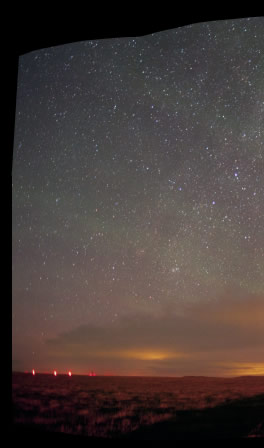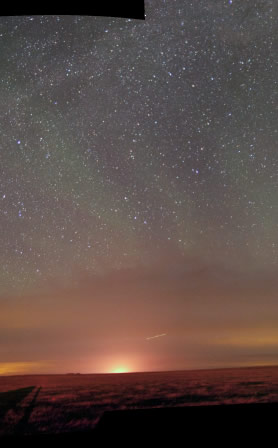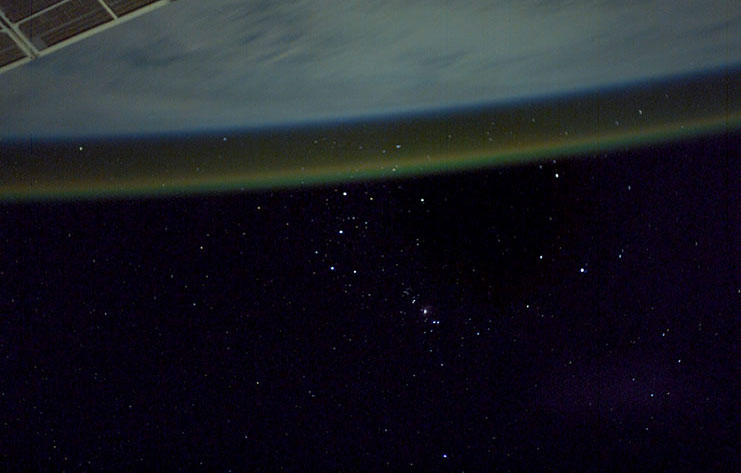Earth�s night side sky is never completely dark. Long after sunset and even with no interference from artificial lights, moonlight or aurorae the sky has a soft glow.
To see it needs a dark sky location and long dark adaptation. Eventually, when stars are almost blinding and the Milky Way is a bright convolved mass, the sky itself will be seen to be luminous and a hand held towards the heavens will be a black silhouette.
Unlike the aurora, the airglow is visible all over the globe. It is strongly coloured but it is without colour to our unaided eyes because its light is below their threshold of colour perception. From orbit (right) it is a green bubble enclosing the world.
Airglow is the result of excitation of the upper atmosphere by solar ultra-violet radiation. In contrast, the more localised aurorae are excitation by particles plunging down from Earth's magnetosphere. The airglow radiation is mostly very narrow frequencies from transitions within excited oxygen atoms and OH radicals.
As here, the airglow is sometimes banded. Slowly moving gravity waves propagating up from the atmosphere below modulate the conditions of the tenuous gas and thus the light emission.
The bands can appear to cross the sky and converge towards two opposite points on the horizon in the same way that crepuscular and anticrepuscular rays do. The reason is the same, the glowing bands are parallel and perspective effects makes them appear to converge.
|





